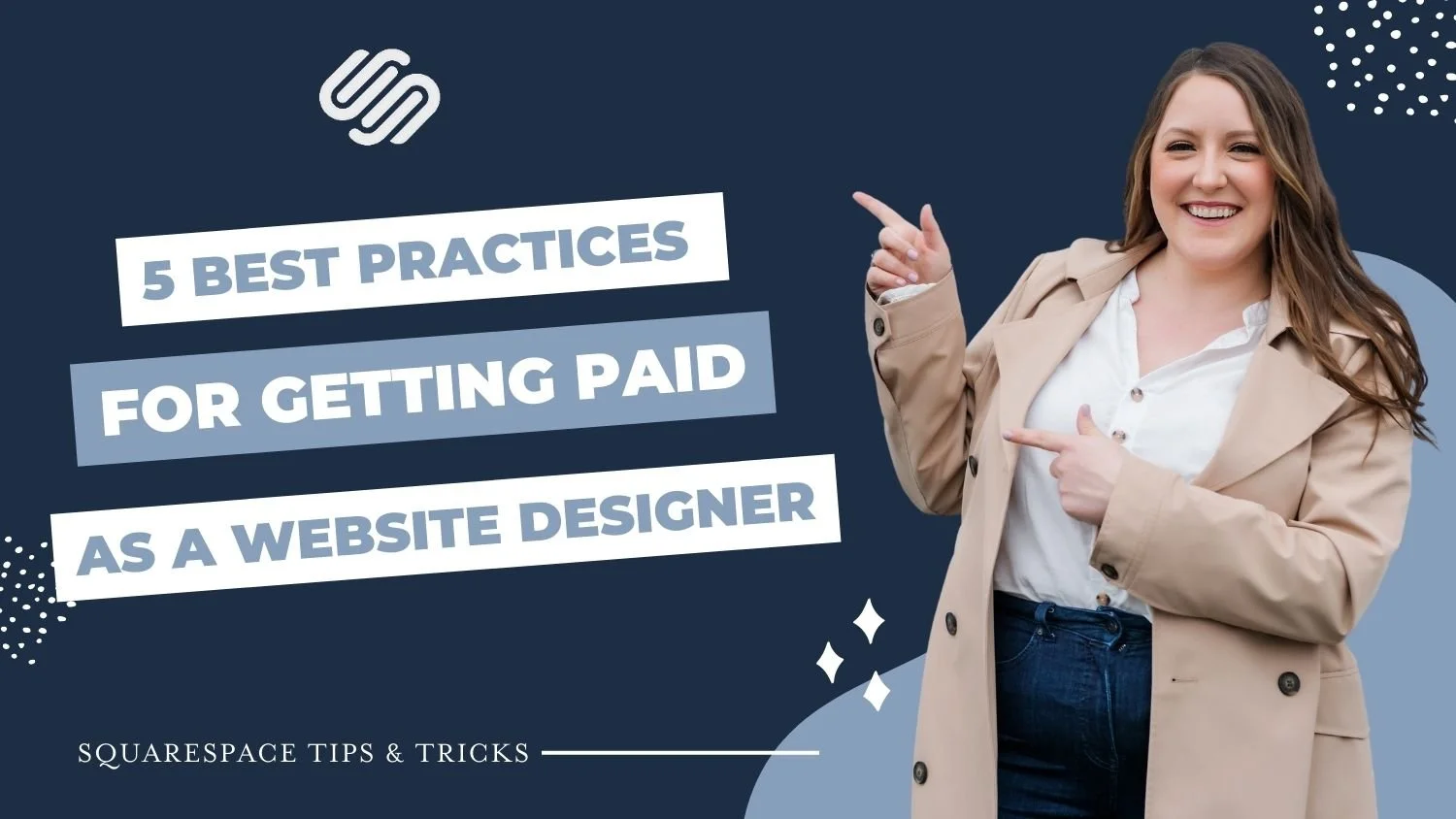5 Best Practices for Getting Paid as a Website Designer
Getting paid as a website designer is one of the most vital parts of running a successful business. It can also be the most stressful. It’s one thing to get paid but making sure you are getting paid in full, on time, and consistently is what really matters. This is much easier said than done for many small business owners.
According to the Freelancers Union, “71% of freelancers struggle to collect payment for work at least once in the course of their career.” When you think about chasing after late payments, getting ghosted or—worst of all—fighting disputes about whether you even deserve to be paid, it’s easy to see why getting paid gets complicated, fast.
In this video, I show you how you can use Honeybook to make sure you get paid in full and on time to ensure your projects progress as they should.
For 50% off your first year of Honeybook go to http://share.honeybook.com/rebeccagrace50 <— this is an affiliate link
Get organized
The first part of getting paid on time is to get organized. Decide how you want to break down the payment and align it to a project milestone. This means that client’s need to complete a payment for the work to progress. I have my clients pay a 20% deposit to secure their design date. This decreases the number of cancellations and ensures that you are only blocking off dates for clients that are serious about working with you. They then make another payment of 30% on the first day of the project. Before I get started I then make sure they have made a payment and have completed all the necessary files for me to get started. They then make the final 50% payment before I hand over the website on our last day of the project.
With Honeybook, all of my payments are automatically organized in one place. This gives me a clear overview of my finances and makes it super easy to keep track of payments.
2. Use a contract
We all enter business agreements with the best of intentions, but awkward situations can arise when deliverables and billing change. Using a contract is critical in ensuring you and your client understand exactly what you’re delivering and what to expect.
Protect your business (and bank account) from the risk of not getting paid with a contract. It’s so easy to have your contract set up in HoneyBook, and if you don’t have one yet, HoneyBook provides legally written contract templates for you when you join. These contracts can be sent through HoneyBook for electronic signature and should be signed by your client before any work begins.
Not only does having a contract help protect you if you need to seek legal help or escalate to small claims court, it also sets expectations on the work you’re doing, the deliverables you’re providing, when you’re delivering them and for how much. Getting this alignment from your client at the outset increases your chances of delivering work to a happy client who will pay you.
For all contracts, I recommend the Creative Law Shop. You can see their templates for Website Designers here. For 10% off use code REBECCAGRACE10 at checkout <— this is an affiliate link.
3.Use online invoices
The best way to get paid is fast—for both you and your client is to allow online payments. HoneyBook has a processor already integrated in it’s platform so all you have to do is add your bank details in order to receive payment!
HoneyBook makes it so easy for clients to both sign your contract and make their payment in one place! Here’s how it works:
Send an online proposal to your client
Client can sign your contract electronically
Then submit payment via credit card or bank transfer
Cha-ching! You get paid.
HoneyBook online invoices provide a seamless client experience and get you paid—fast. HoneyBook has all the same invoicing and payment capabilities as software like QuickBooks, but because HoneyBook is more than an accounting software, it has even more perks. You can manage all client communications in one place, automate repetitive tasks and get paid —all while keeping it personal and on-brand. (No separate invoicing tool needed!).
A quick note on fees—All online payment processors take fees in order to cover the risk of processing a payment. The industry standard is right around 3%. HoneyBook charges the following rates per transaction:
ACH bank transfer – 1.5%
Card – 3%
4. Set up automatic payments
When sending the contract and invoice to the client, I always request that they turn on automatic payments. That way they only have to input their details once and the rest of the payments come out on their scheduled date.
5. Send reminders
Even the best clients may need a nudge to pay on time. Because I’ve set up my client’s payment schedule in advance, HoneyBook will automatically send a payment reminder when a payment is coming up. This saves me time as I’m not chasing after payments and don’t have to worry about annoying clients with constant reminders (just blame your software if you get any funny comments!)
Interested in trying Honeybook?
Get 50% off your first year of honeybook at https://share.honeybook.com/rebeccagrace50
** My 50% off link is an affiliate link and while I receive a small kickback for sales, I share about these products because I use them in my own business.



